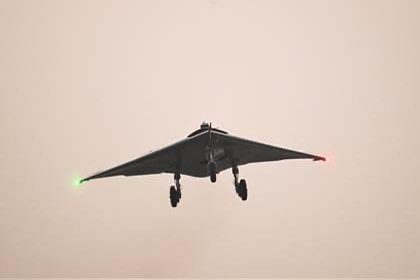SOURCE: RAUNAK KUNDE / NEWS BEAT / IDRW.ORG


The Defence Research and Development Organisation (DRDO) is making rapid progress on its project to develop a subscale demonstrator of a stealthy flying wing uncrewed aircraft system (UAS). This technology is seen as critical for the development of India’s own Remotely Piloted Strike Aircraft (RPSA), also known as the Indigenous Stealth Drone.
Sources familiar with the program have revealed to idrw.org that the RPSA program will require dedicated funding as the Indian Air Force (IAF) and DRDO are still finalizing the configuration of the aircraft. This separate funding is estimated to be around 8000 crore rupees and will cover the development of two variants – one for strike missions and another for air dominance.
The project could also involve the development of the Dry Kaveri engine, along with necessary testing and certifications, further pushing up the costs. Some of the funds allocated for the Advanced Medium Combat Aircraft (AMCA) in 2018 have reportedly been diverted towards the development of the two subscale demonstrators.
The RPSA program is expected to incorporate several cutting-edge technologies, including:
- Onboard data fusion and artificial intelligence (AI) capabilities: This will allow the drone to make decisions autonomously, improving its situational awareness and combat effectiveness.
- Advanced stealth airframes: The flying wing design and stealth materials will make the drone difficult to detect by radars, increasing its survivability.
- Integration of directed energy weapons (DEW): DEWs offer a non-kinetic way to destroy targets, and could potentially be a game-changer for drone warfare.
The development of a successful RPSA program would be a significant step forward for India’s military capabilities. The drone could be used for a variety of missions, including reconnaissance, surveillance, and strike operations. It would also provide valuable experience for DRDO in developing more advanced uncrewed aircraft systems in the future.
Despite the promising progress, the RPSA program faces several challenges. One major hurdle is securing the necessary funding. The Indian government has been hesitant to invest heavily in military projects in recent years, and it is unclear whether the RPSA program will receive the full amount of funding it needs.
Another challenge is developing the required technologies. Onboard data fusion, AI, stealth airframes, and DEWs are all complex and expensive technologies. DRDO will need to rely on a combination of domestic and foreign expertise to develop these technologies successfully.
Finally, the IAF and DRDO need to agree on the final configuration of the RPSA. There are trade-offs to be made between different factors, such as range, payload, and stealth. Finding the right balance will be crucial for the success of the program.
NOTE : Article cannot be reproduced without written permission of idrw.org in any form even for YouTube Videos to avoid Copy right strikes. Websites doing illegal reproductions will get DCMA and Legal Notices.